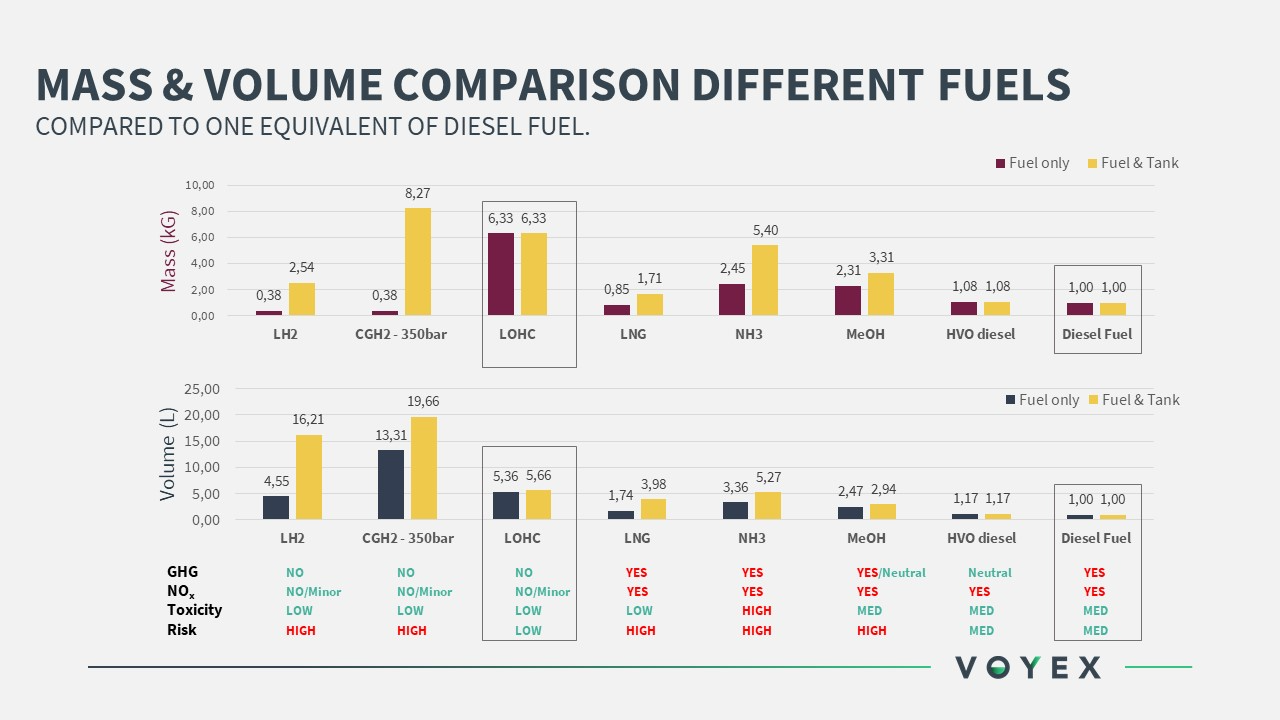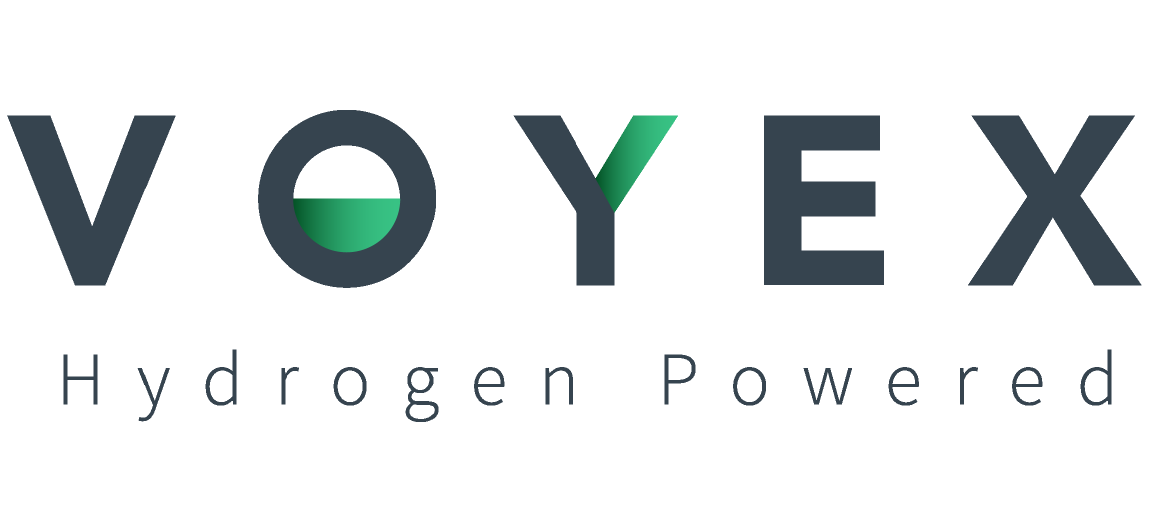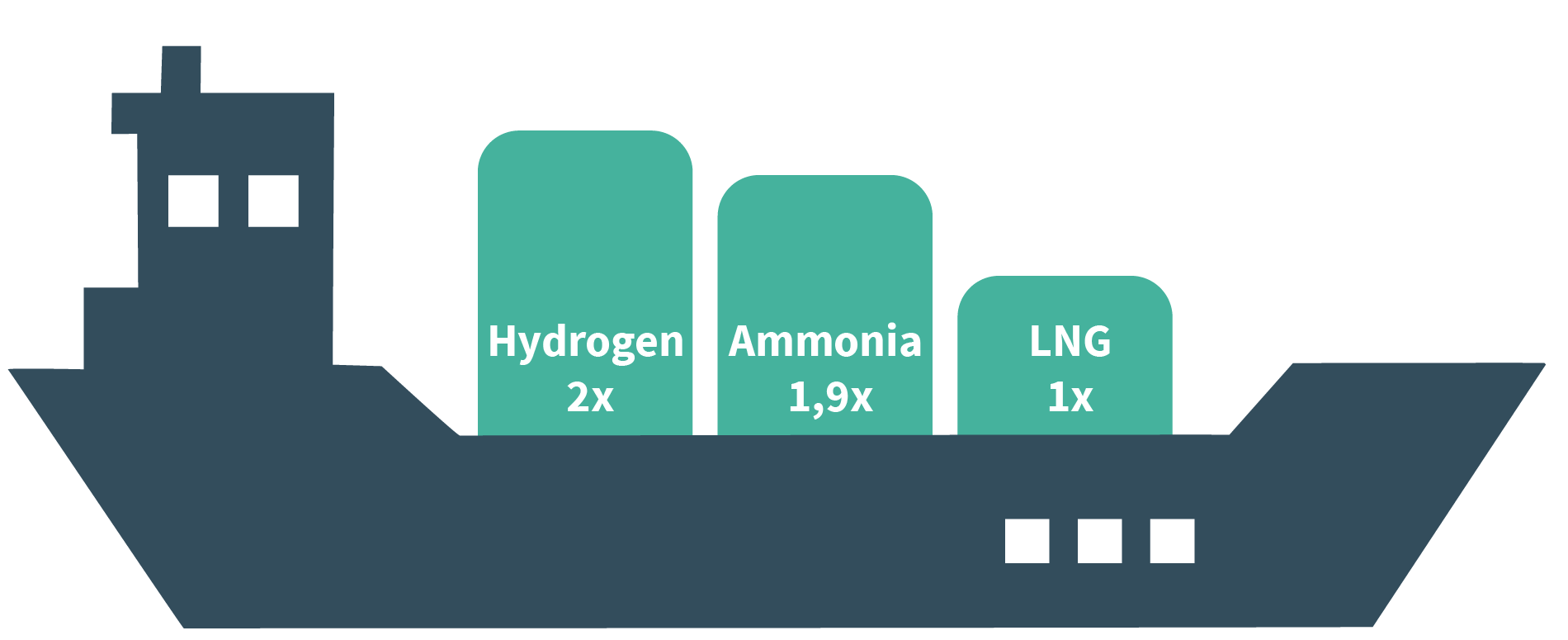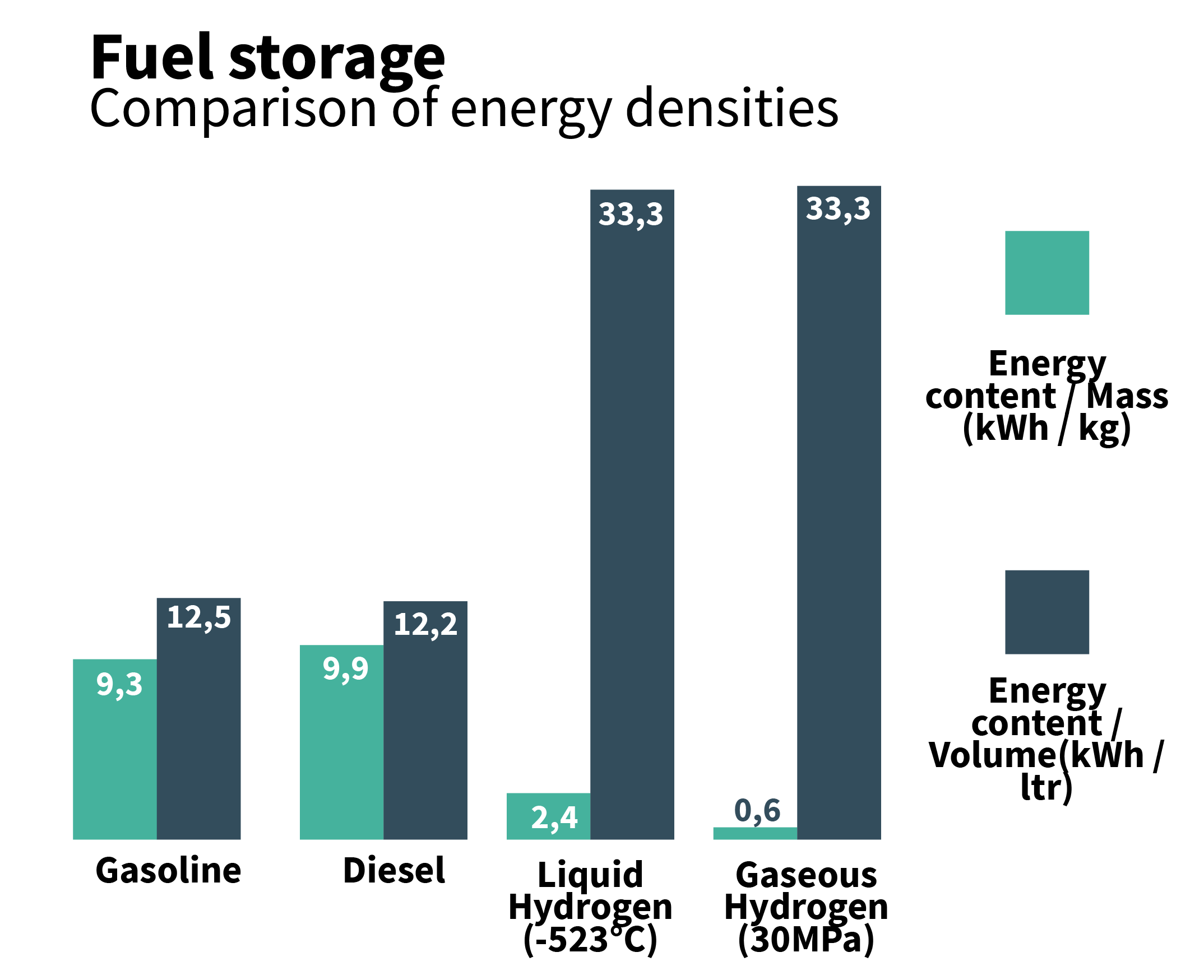How Voyex LOHC compares
Voyex LOHC carries 60 kg of hydrogen per 1,000 Liter, thus compounding 8500 MJ (almost 2,000 kWh). However, by reusing heat residues from the ICE, releasing the hydrogen from the Voyex LOHC only requires a negligible amount of added energy. This saves up to 10-15% energy! 
To make this concept better to grasp, we will explain the concept of energy density in two contexts below.
How energy density impacts construction sites
The current standard approach for powering construction sites is to use tube-trailers that hold approximately (standard) some 350-450 kg of pressurized hydrogen as a storage solution. These tube trailers are typically placed next to refueling stations or on construction sites in a separate, shielded area due to safety requirements. The logistics and safety dynamics accompanied by Voyex LOHC solutions, are noticeably less extensive. 1m3 Voyex LOHC holds 60 kg of hydrogen, so a 4m2 footprint is sufficient. This is some 8 times smaller than a tube-trailer. In addition, Voyex LOHC is safer than diesel and can be stored at atmospheric pressure and ambient temperature, which we expect should make the permitting process for Voyex solutions much faster, saving serious time and money. And last but not least, 1m3 one can operate continuously a full day a 100KW generator set.
How energy density impacts transport and storage
Electricity is relatively expensive in (northern)Europe compared to regions such as the gulf region, North-Africa or Australia, This makes it a serious challenge to produce cost-competitive green hydrogen (via electrolysis) in Europe. The general assumption is that the most cost-competitive solution will be to import large quantities of hydrogen to Europe. When looking at volumetric volume densities, ammonia is considered an attractive option for transporting this hydrogen, after which liquified hydrogen comes up and then LOHC. However, energy density is not the only aspect that determines the attractiveness of a transport solution for hydrogen. Safety and handling are equally important, if not more, when shipping massive amounts of fuel. Publications of both IRENA (2022) and IEA (2023) demonstrate that ammonia and LOHC are more suitable options for hydrogen import than liquified hydrogen. Moreover, ammonia and LOHC are expected to be at the same cost level as liquified hydrogen.
However, the LOHC used in these evaluations are NOT based upon the molecule Voyex is using. The voyex LOHC contains 8-10% more hydrogen per cubic meter and requires 10-15% less energy for the conversion back to hydrogen than the LOHC’s used in the above mentioned reports.
As a result, Voyex LOHC should be considered a strong candidate for importing and storing large quantities of hydrogen. Additionally, the Voyex LOHC is safer than diesel, both in terms of safety and toxicity, and allows reusing currently available assets, on terminals as well as ships.
Voyex B.V has developed a Liquid Organic Hydrogen Carrier that will make the transition from diesel to zero-emissions as easy as it gets. We work closely together with many partners in the hydrogen supply chain to help get the zero-emission economy off the ground as fast as possible.




